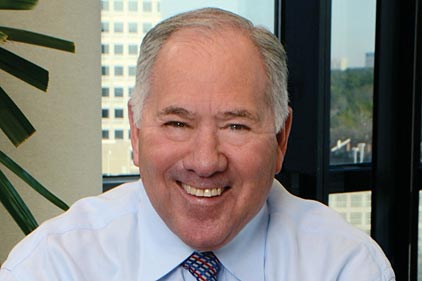
|
| Richard D. Alaniz |
The Wall Street Journal recently reported that two nonprofit community groups, backed by the Retail, Wholesale and Department Store Union and the United Steelworkers, successfully began the process of organizing nearly 200 carwash workers in Los Angeles and New York.
Under their union contracts, New York carwash workers who had been paid $7.25 an hour will now receive $7.53 an hour, including tips, along with five days of paid sick leave for the first time. Their pay rate will jump to $9.18 an hour by the third and final year of the contract.
One newly minted union member said he and his fellow employees probably wouldn’t have joined the union without daily contact from the two worker centers. “They’re the ones that kept us all together and showed us the steps we needed to take,” said Juan Campis, according to the article.
Another group, the Korean Immigrant Worker Advocates (KIWA), has been actively striving to win legalization and immigrant rights for workers in Los Angeles, raise the minimum wage, and save hundreds of union jobs at two hotels. The organization’s website says it works “in collaboration with other progressive organizations,” including SEIU United Long-Term Care Workers, UFCW Local 770, and United Steel Workers Local 675.
According to the Workforce Freedom Initiative, a division of the U.S. Chamber of Commerce, the worker center movement “is gaining both momentum and sophistication and may help organized labor find entry into facilities where workers have previously declined to embrace unions.”
For companies that are wondering if they are next (or don’t even know whether to worry if they may be next or not), it’s time to understand the changing focus of worker centers and prepare for their presence.
The Growth in Worker Centers
Even as the number of workers in private labor unions has shrunk to its lowest level in the last 50 years, the reach of worker centers has grown significantly. According to Urban Habitat, there were fewer than five worker centers nationwide in 1992. By 2007, that number had increased to at least 160 in 80 locations across the country.
While many worker centers focus on non-union activities, others have begun to step extremely close to the line of union organizing — and some have crossed over it, according to business groups and legislators.
In recent months, U.S. Rep. John Kline (R-Minn.), chair of the U.S. House Committee on Education and the Workforce, and U.S. Rep. David P. “Phil” Roe (R-Tenn.), chair of the Health, Employment, Labor, and Pensions Subcommittee, have been asking federal agencies to carefully review the activities of several worker centers. In a July letter to Thomas E. Perez, then the newly-appointed Secretary of Labor, Kline and Roe pointed out that “the line between so-called ‘worker centers’ and labor organizations has become blurred.” According to the letter, these worker centers have also “taken direct action to alter conditions of employment and organize employees.”
The letter requested an official determination of whether several worker centers, including KIWA, the Organization United for Respect at Walmart, the Retail Action Project, and Fast Food Forward, have filing obligations under the Labor-Management Reporting and Disclosure Act.
In November, Kline and Roe also asked the U.S. Department of Health and Human Services to provide information concerning the role of worker centers in implementing the Patient Protection and Affordable Care Act. According to a press release, “The request is part of an ongoing effort examining the activities of worker centers.”
Close Ties to Unions
In recent years, a number of unions have become closely involved with worker centers. In September, the AFL-CIO passed a resolution to expand partnerships with non-union groups, including worker centers. According to the statement issued by the AFL-CIO, “The labor movement must be broad and inclusive. The labor movement cannot be confined within bargaining units defined by government agencies or limited to workplaces where a majority of employees votes ‘Yes’ in the face of a ruthless campaign by their employer to deny them representation. The labor movement consists of all workers who want to take collective action to improve wages, hours, and working conditions.”
The AFL-CIO had been developing relationships with worker centers for years. It started in 2006, when they began formally affiliating with state labor federations, local labor councils, and the worker centers Working America, as well as the National Day Laborer Organizing Network. In September 2011, the National Taxi Workers’ Alliance became the first nontraditional workers’ organization to become formally chartered by the national AFL-CIO in more than six decades.
What Employers Should Do Next
While some worker centers may engage in many of the same activities as unions, they are not bound by national labor laws or financial reporting requirements. In order to address the actual and potential presence of worker centers, companies need to take several steps.
• Understand the growth in worker center activities.
Many employers have never heard of worker centers, but that can change quickly. With the explosion of worker centers across the country, these organizations may already be talking with employees. Many worker centers are also very adept with the use of social media, so they may be in close contact with employees without companies even knowing about it.
• Work with legal counsel.
The relationships between businesses and traditional unions are governed by laws and regulations and are generally clear-cut. When questions arise, there are regulatory authorities to consult and procedures to follow in order to reach a resolution. None of these rules exist with worker centers. Employers with workforces that could be targeted by back-door unionizing activities need to work closely with legal counsel to understand what their rights are when dealing with these groups.
Attorneys can also clarify the rights of employees and the appropriate steps employers should take when workers participate in worker center-led activities. Remember that non-union workers have rights under Section 7 of the National Labor Relations Act to “self-organization, to form, join, or assist labor organizations, to bargain collectively through representatives of their own choosing, and to engage in other concerted activities for the purpose of collective bargaining or other mutual aid or protection.” If non-union employees join in actions organized by worker centers, including work stoppages, they may be protected by federal laws.
• Consider becoming involved.
While many worker centers do not engage in anything remotely close to union work, others do. These groups enjoy the perks of unions but are not responsible to employees, businesses, or regulatory authorities. In order to ensure that all the rules are being followed and that workers’ best interests are being served, companies may want to consider becoming involved in lobbying and education efforts regarding worker centers, either on their own or through associations or groups.
• Talk to employees.
Like unions, worker centers target industries and companies where employees often feel like they don’t have a voice. To head off potential issues, executives, managers, and supervisors should take time to ensure that employees feel they have an open dialogue with the company and that their concerns are heard and addressed.
• Ensure fair and consistent policies.
One of the fastest ways to alienate employees is to apply company policies or discipline in an unfair or inconsistent manner. Employers should work especially hard to ensure that all of their managers and supervisors are consistent and fair across the board. This does not mean pandering to poor performing employees, but it does means applying work rules consistently and adequately explaining the reasons behind any discipline.
• Recognize signs of union activity.
Early identification of union activity gives employers the opportunity to address problems and inform employees of basic facts about unions before employees make a decision one way or another on a potential union. Often managers or supervisors may ignore union activity or not speak up for fear that union discussions or organizing activity will reflect poorly on them. Employers should train supervisors and managers on union issues and instruct them to immediately report union activity to the company. This includes recognizing worker center activity.
As unions struggle to keep members through traditional methods, they are increasingly looking to other approaches to increase their numbers, including developing relationships with worker centers. Employers need to understand how these UFO groups target workforces and how to protect themselves and their employees.
Publication date: 12/23/2013
Want more HVAC industry news and information? Join The NEWS on Facebook, Twitter, and LinkedIn today!



Report Abusive Comment